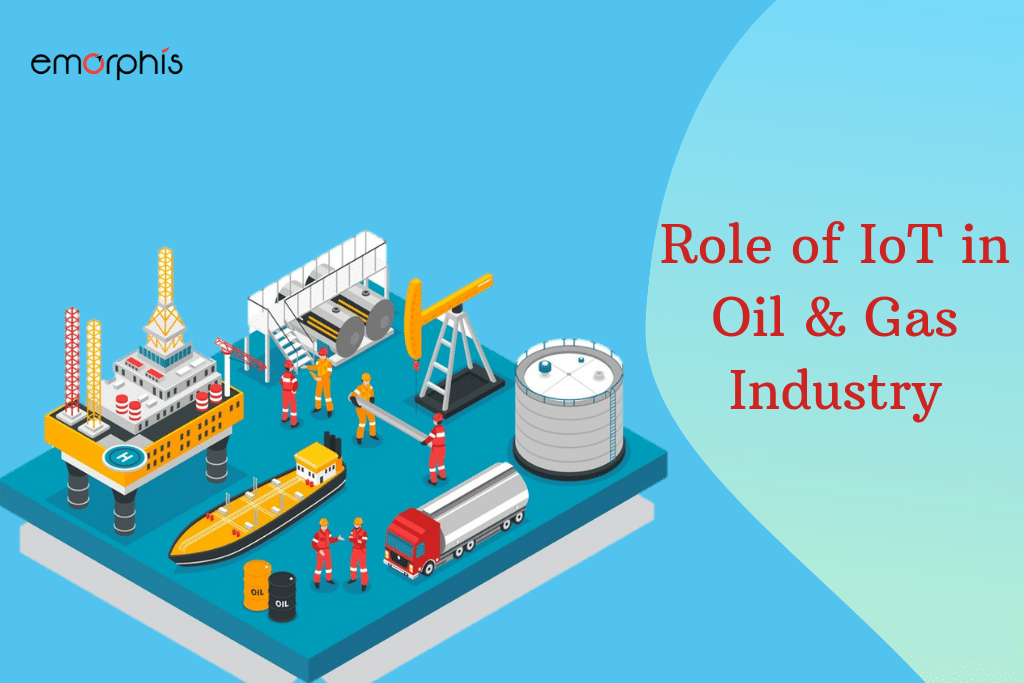IoT basically is a system of devices and system associated with the internet. With the IoT, these systems can convey data to other associated devices. Like for many other industries, today the industrial internet of things (IIoT) is the future of the oil and gas industry as well. As the internet of things’ (IoT) network of devices, sensors, and software realizes the change in consumer’s everyday lives, this specific industry is falling behind.
Oil and gas have been confronting difficulties, to a great extent ascribed to the out of date and wasteful methodology that numerous companies take to keep up resources and collect data.
There are numerous such an issue, every one of which can influence the distinctive phases of oil and gas business lifecycle – from upstream, midstream, and downstream to service in the field. It’s clear that the traditional condition-based monitoring solution is outdated, increasingly costly and less successful.
There are other basic difficulties Mentioned below in the reference across three parts of the oil and gas industry:
- Companies in the upstream area lose billions of dollars in discovering another onshore or offshore oil and natural gas fields and work it in a way that isn’t just financially focused however ecologically dependable as well.
- Those in the midstream sector face a huge issue of oil and gas leakage. As indicated by PHMSA (pipeline and hazardous materials safety administration) – the united states department of transportation – around nine million gallons of crude oil has spilled from pipelines in the united states since 2010. Consequently, automated pipeline investigation is the need of great importance.
- The maturing infrastructure and surprising downtime keep on plaguing the downstream side of the oil and gas industry. In a universe of low oil costs, diminishing spontaneous downtime can be the establishment of operational productivity and expanding operational proficiency is a requirement for picking up the most elevated possible ROI.
More or less, the oil and gas business needs more real-time, start to finish network of individuals, procedures, data, and things over the upstream, midstream, and downstream areas to improve operational effectiveness and consequently return the business to grow. That is the reason for selection of enterprise IoT platforms and big data are presently seen less as trendy expressions and more as earnest needs.
With regards to IoT, many think as far as microcontrollers, system-on-chip boards, single-board computers, sensors, and several other electronic components. Devices are without a doubt the establishment of IoT, but the core value of a connected solution lies in the foundations of IoT– sensors, network, storage, and big data analytics.
IoT in the Upstream Segment
Oil and gas repositories can be at a depth of more than 3,000 meters in the seas or caught in geographical issues where the stone is collapsed into complex structures. Now, there is a time to discover oil and gas have finished. That is the reason the utilization of robots and sensors to break down the surface and underground situations could spare a huge number of dollars and an enormous measure of time.
Additionally, the upstream part alone utilizes a large number of specialists who are occupied with a variety of processes, and each function has potential dangers. Actually, oil and gas workers are seven times more likely to be injured. The features include the importance of worker safety. IoT in oil and gas can play a main job in guaranteeing the safety of such workers by identifying when critical pieces of equipment need replacement.
IoT in the Midstream Segment
Unexpected pipeline breaks are a genuine migraine for midstream companies over the globe. With yearly misfortunes of $37.23 billion because of fuel leaks and thefts internationally, companies are worried about improving pipeline safety and dependability.
All things considered, Enbridge and TransCanada have introduced sensors inside and outside of the pipelines to feel, see, hear, and smell different parts of their oil pipelines and to recognize potential pipeline breaches : a fiber-optic distributed temperature sensing system ‘feels’ fluctuations in temperature brought about by bitumen leaking into ambient soil; vapor-sensing tubes ‘see’ bitumen spilled by shooting air down a tube; a fiber-optic distributed acoustic sensing system ‘hears’ sound variations, and hydrocarbon sensing cable sends electric signs to ‘smell’ hydrocarbons and can indicate a pipeline leaks.
As a spill by any single operator or by some other means like corrosion, material failures, excavation damage or even natural forces lead to greater expenses, more companies are moving toward building up a data-enabled monitoring infrastructure and employing IoT in the oil and gas industry.
IoT in the Downstream Segment
The number of refineries operates its machines in stark contradictions. From one viewpoint, if a single pump fails all of a sudden, it might cost a company $100,000 to $300,000 every day in lost production. While on the other hand, refineries change a valve pump every twelve months, paying little heed to the health of the part – despite the fact that the pump might be completely fine. IoT can change this by utilizing real-time data. If the pump needs substitution early – it gets replaced and a sudden shutdown is avoided. But, if the pump doesn’t need a replacement for the following couple of months, the time and cash could be saved.
Overall, with the utilization of IoT in oil and gas, refineries can improve their execution, limit their downtime, and production keeps on moving consistently.
Conclusion:-
In general, IoT app development is changing the oil and gas industry and making things more conveniently approachable, more secure, and more cost-effective for all the stakeholders.
Internet of Things (IoT) solutions is helping the oil and gas industry, from downhole sensors to surface control valves and directly into the boardroom to give real-time analysis. This results in improving operation, settle on better choices and make a more secure workplace for the whole oilfield.
As the oil and gas industry keeps on being progressively focused, companies cannot afford to be left behind. In any case, if companies can understand the open doors inborn in embracing IoT technologies, their future without a doubt looks brilliant.







